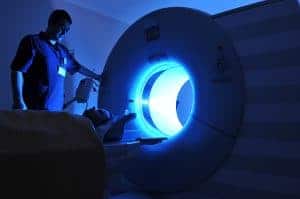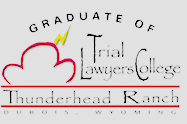 If you’ve ever suffered a blow to the head, or were in a car accident where you experienced whiplash or other trauma, you understand the physical and mental symptoms. In some frustrating situations, you can tell something isn’t right, yet the physician at the emergency room or urgent care said all tests came back normal.
If you’ve ever suffered a blow to the head, or were in a car accident where you experienced whiplash or other trauma, you understand the physical and mental symptoms. In some frustrating situations, you can tell something isn’t right, yet the physician at the emergency room or urgent care said all tests came back normal.
Is it possible that CT scans and MRIs can fail to detect a traumatic brain injury, or TBI? The answer, unfortunately, is yes – but that doesn’t mean you should give up hope on a diagnosis or your Southaven personal injury case.
As we know, TBIs happen when any trauma to the head causes brain tissue to bruise or tear. This results in damage to nerve fibers and brain matter, which can lead to permanent dysfunction – including headaches, memory loss, personality changes, and problems with concentration.
Acute TBIs can be visually obvious and urgent in nature. However, many TBIs are difficult to detect at first, especially if they’re less acute. Even a “mild” traumatic brain injury like a concussion may not present immediate physical symptoms, but can later cause serious cognitive and functional difficulties.
An MRI is a diagnostic imaging study that helps medical professionals identify and diagnose brain injuries (among others). Typically, after a car crash or other accident, a doctor will order a CT scan to look for fractures, bleeds, or other life-threatening injuries. MRIs, however, are better for diagnosing more microscopic injuries to the brain.
However, not all TBIs show up in imaging scans. Often, diagnostic scans can fail to accurately capture the severity of a brain injury. This happens for several reasons.
TBIs can take time to develop. A microscopic brain injury or bleed may not appear on a scan for hours, or even days. Not every CT scan or MRI may show the actual extent of nerve fiber damage or other microscopic tears and bruising. It’s also important to remember that an MRI is only as useful as the machine that takes it and the radiologist that interprets it. Newer, more cutting-edge MRI machines can detect more subtle brain injuries, but not every hospital is equipped with them. Or, if your scan was performed without contrast dye, your MRI may not show trauma.
Lastly, doctors and insurance companies rely on the radiologist’s interpretation of the MRI. Most radiologists are competent professionals, but results can be misread or misinterpreted.
Even if your diagnostic scans come back normal after a head injury, you may still have a valid personal injury claim. If you believe your TBI claim was improperly denied, talk to the personal injury attorneys at Taylor Jones Taylor today. We provide skilled representation to clients in Southaven, Olive Branch, Hernando and the surrounding areas. To schedule a consultation, call 662-342-1300 or fill out our contact form to learn more.
Related Articles
- Traumatic Brain Injuries
- Southern Mississippi University Leading the Way to Protecting Soldiers from Traumatic Brain Injuries

Benjamin L. Taylor is a lifelong resident of DeSoto County and has distinguished himself in the area of products liability and personal injury law. He has a reputation as a fierce advocate for his clients and has obtained millions of dollars in verdicts and settlements over his career. He has been listed in the publication Super Lawyers of the Mid-South in the area of product liability. To learn more about Mr. Taylor, please refer to his biography page.




